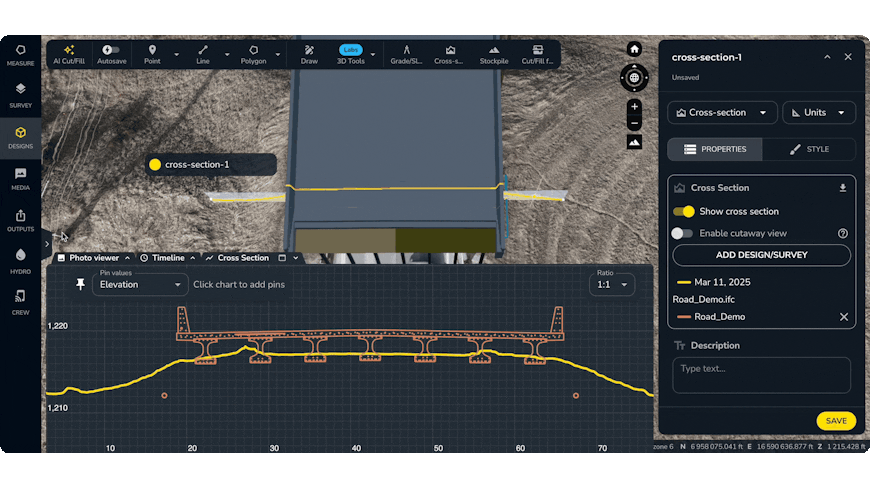Cesium Releases in October 2025
In September, we released Cesium Mars, highlighted MicroStation’s 3D Tiles support and Cesium Native integration, and announced participants in the iTwin Activate cohort focusing on Cesium and 3D Tiles. We also attended the GeoGov Summit and welcomed Khronos members to Philadelphia for the F2F meeting.
Cesium Mars is a 3D Tileset to enable developers, researchers, and mission planners to create visualizations and simulations of the Red Planet.
We made improvements across Cesium this month. To get notifications about our monthly releases, you can subscribe to the Cesium release roundup thread on our community forum.
CesiumJS 1.134 release
CesiumJS 1.134 is now available. Highlights of the release include:
- Added
Google2DImageryProviderto load imagery from Google Maps. #12913 - Converted voxel raymarching to eye coordinates to fix precision issues in large datasets. #12061
- Fixed vertical misalignment of glyphs in labels with small fonts. #8474
- Fixed flickering artifact in Gaussian splat models caused by incorrect sorting results. #12662
For more details, see the changelog.
Sandcastle has been updated at https://sandcastle.cesium.com! The legacy Sandcastle app will remain available through November 3, 2025.
Cesium for Unreal 2.20.0 release
Cesium for Unreal v2.20.0 is now available. Highlights of this release include:
- Added support for rendering glTFs with line primitives.
- Added
UCesiumGoogleMapTilesRasterOverlay. - Added
AssetOptionsproperty toUCesiumIonRasterOverlay.
In addition to the above, this release updates cesium-native from v0.51.0 to v0.52.0. See the changelog for a complete list of changes in cesium-native.
Check the Cesium for Unreal release and the Cesium for Unreal Samples release for the full list of updates.
Cesium ion updates
The Google Maps attribution requirements were updated to use the "Google Maps" logo instead of the "Google" logo. Cesium ion and Cesium clients now use the Google Maps logo. If your application includes its own logic for the inclusion of the logo rather than using a logo provided by Cesium, see Google Maps' documentation for guidance about whether your application needs to be changed.
Cesium ion SaaS
- Cesium Mars is now available.
- Support for spherical harmonics for Gaussian splats.
- Bug fixes for tiling splats.
Cesium ion Self-Hosted
- v1.7.1 is now available, with minor bug fixes.
- Cesium Mars is now available.
Design Tiler
- Fixed an issue that could cause incorrect materials to be mapped to meshes when loading OBJ files.
Cesium ion for Autodesk Revit
- v1.3.0 is now available.
- Add support for Revit 2026.
- Fix export issues for some elements in Revit 2026.
- Fix incorrect transforms for some exported subcomponent elements.
3D Tiling Pipeline
- Support for Mars data added to
imagery-tiler,terrain-tiler, andquantizedmeshto3dtilesconverter. point-cloud-tilerhandles PLY files with any number of comments now.point-cloud-tilerfixed issue where in certain cases when using draco compression with .pntsoutput could result in batch table data not being written.imagery-tileradded TileJSON format support.
Check the changelogs for the full list of updates for Cesium ion SaaS and Cesium ion Self-Hosted.
Powered by Cesium
For years, Propeller has been using CesiumJS to visualize drone-captured surveys of earthworks, quarries, mines, and waste management sites. Propeller recently got an upgrade when its team incorporated Cesium’s Design Tiler into the platform.

For Propeller’s users, streaming IFC files as 3D Tiles means a faster, higher quality experience. They can analyze large files, like viewing cross sections of this IFC model. Courtesy Propeller.